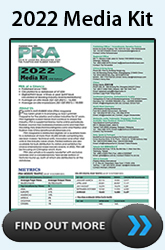Recycling: Lack of higher quality recyclates, more consistent input streams
In this industry interview by industry association VDMA, on the road to K2022 show in October 2022, with Prof. Dr.-Ing. Hans-Josef Endres, head of the IKK (Institute of Plastics and Recycling Technology at Leibniz University Hannover) looks at recycling and the lack of higher quality recyclates and other issues.
Prof. Endres, the plastics industry is often pilloried. What does it have to do to make people appreciate its material?

We have to show that our daily lives are unthinkable without plastics. We must make it clear that plastics make a decisive contribution to a sustainable economy. Only with plastics, not without them, can we achieve our climate targets and significantly reduce our carbon footprint. One way to achieve this goal is to use resources such as energy ever more efficiently. Another is to establish a circular economy. Improved recycling technology is also a crucial lever in achieving these goals. The task is huge and extremely multi-faceted, but it can be done
What are the biggest challenges right now?
It’s a triad: we don’t have enough higher quality recyclates yet, we don’t have enough input streams yet, and there are still too few standards in this area. And all of these challenges are interrelated. To start with the market: There is currently already a high demand for high-quality recyclates, but it cannot be satisfied. Let me give the automotive industry as an example. Let’s assume that in the future there is a quota of 25% recyclate per vehicle. Today, the proportion of plastics per vehicle is around 300 kg. This means that 75 kg of recycled material would have to be used in the future. Last year, about 2.6 million vehicles were built in Germany; it was a very bad year because of the Corona pandemic. So already for this, almost 200,000 tonnes of a high-quality recyclate, for example with constant colour quality and delivery guarantee, were needed just to be able to meet the quotas in this one industry sector. Another example is the bottleneck of white or transparent recyclates.
How far along are you in setting rules and standards in recycling?

Both are enormously important, and at all levels. There are already approaches, albeit still very rough ones, on how to characterize input streams. These were essentially developed by the dual systems. In addition, we need standards for defining the resulting recyclate qualities. For example, it must be specified which volatile substances may still be contained, how this is to be measured exactly, and who is responsible for this. Up to now, people have said that if there is nothing of concern in the input stream, there is nothing of concern in the recyclate. We also have to have standards for colors. Every recyclate needs a trade name so that you get the same product the next time you order it. In addition, all recyclates lack information on long-term properties or characteristic values for processing or crash simulation. All this is not very difficult. After all, the manufacturers of virgin material show how it is done. They supply a great deal of information and characteristic values for each product.
What contribution do the individual processes make to sustainability?
That’s not very easy to say. Basically, chemical recycling could make large quantities of high-quality recyclate available. Conversely, mechanical recycling is much more sustainable in most cases, since the energy and resources required are much lower and the polymer structures are also preserved. It is also difficult to determine which actors in the recycling value chain are credited with the sustainability benefits achieved in each case, for example the input supplier, the recycler or the user of the recyclate. In chemical recycling, for example, the carbon is recycled, but not the actual material. In addition, the user does not get the physically recycled carbon, but receives a mass-balanced certificate, which even has to be purchased additionally. If the user waives the certificate, he receives the same material, but without the certificate.
How do you get the input streams needed to generate sufficient quantities of constant recyclate quality?
That is a huge task. These input streams are still a very limiting factor, especially in the post-consumer sector. This is because today’s users cannot rely on receiving sufficient quantities of single-variety material with a longer-term That is a huge task. These input streams are still a very limiting factor, especially in the post-consumer sector. This is because today’s users cannot rely on receiving sufficient quantities of single-variety material with a longer-term
Which is the most advanced?
The mechanical processes are already established. For the physical processes, in which the plastic is dissolved out of other materials by a specifically effective solvent, there are the first industrial plants. The chemical processes, in which the plastics are depolymerised or broken down even further into hydrocarbons, still need to be improved, particularly in terms of energy efficiency and yield. However, they also have some fundamental advantages. The quality of their recyclates is high, they achieve colour purity and consistent material performance. Such recyclates also get approval much more easily for critical applications, such as in the food sector. Put simply, the higher the recyclate quality, the higher the technical effort and thus the costs.
(IMA)Subscribe to Get the Latest Updates from IMA Please click here
©2022 Injection Moulding Asia. All rights reserved.

















